

Discover more from Frederick R. Smith Speaks
MARTA has an Army
Following the fictitious Socialized Holistic Intracity Transit Commission, we now have a Sexier Metro Atlanta Rapid Transit Authority

We lose 3,000 people every month to traffic crashes. We must confront the fact that these tragic deaths are not inevitable, but preventable. We need to take new steps, like a safe systems approach nationwide… If we do this right, we’ll look back on the 2020s as a period when transportation equity reached new levels. That makes not only historically excluded groups better off, but the whole country better off, because we’ll have a stronger, more stable, richer, fairer economy for all.
Transportation Secretary Pete Buttigieg
Words: 18,435 ~ Read time: 12 min
Foreword
I penned a January 19, 2024, essay introducing the fictitious Socialized Holistic Intracity Transit Commission (SHIT-C). Amazingly, a recent development has emerged with the birth of Sexier Metro Atlanta Rapid Transit Authority (SMARTA)—a spellbinding story.
Before diving into the following text, we must gently remind you that what lies ahead may contain a dose of satire. While we strive to entertain and provoke thought, please remember that the absurdities, exaggerations, and outright ridiculousness you may encounter are all in the name of humor and social commentary. So, buckle up, railway friends, and prepare to navigate a world where reality occasionally takes a backseat and irony propels the subway train. Oh, I forgot, much to the dismay of the collectivists, we have no seat belts on trains.
Progressive Dreams for Public Transit: review by Frederick R. Smith
Liam Crisan of the uber-left-wing (alt-left) Institute for Policy Studies (IPS) wrote the February 21, 2024, article Progressive Dreams for Public Transit. It discusses the quixotic excitement caused by a tail transit aficionado’s homemade map on Instagram. At least the local news covered the story before Crisan with its provocative February 1, 2024, headline: No, that hypothetical MARTA map on Instagram isn’t real. CNN and Crisan missed that essential and compelling story by local 11ALIVE media. Of note, the map is gone from the news site. Nevertheless, it showed an expanded transit system for Atlanta. In a progressive ecstasy mind meld moment, the aficionado turned creator, Brooke Robinson, titled the map Sexier Metro Atlanta Rapid Transit Authority (SMARTA).
As claimed by Crisan, despite its saucy name, the map sparked “fervent reactions” from residents. Many regretted the delay of such a system. They were eager to push the idea to politicians. However, the Metropolitan Atlanta Rapid Transit Authority (MARTA) cautioned that making these projects happen requires much more money. Besides, it is surprising MARTA has not taken Robinson to court for disparaging its name with sexual innuendoes. Yet that “sexier” moniker could entice a new kind of ridership. On the other hand, maybe SMARTA is the name of the World Economic Forum’s emerging disease X.
When SMARTAX (pronounced smart ax) occurs, the collective can open the subway fare gate to the border invaders so they can get to work to pick up the progressives’s trash. No worries, as the rest of us will be nestled in the progressive’s wet dream: teleworking. How do we know this? Pungently Progressive Institute for Policy Studies loves invaders. They say Congress Should Embrace the Vitality That Immigration Brings.
SMARTAX notwithstanding, MARTA acknowledged budget limits. But, transit organizer Bakari Height praised the public’s big dreams for the city’s transit system. Height co-founded MARTA Army. He stressed the need for better transit in Atlanta. That is especially true since it’s one of the few Southern cities with heavy rail. Rest assured that Department of Transportation Secretary Pete Buttigieg will have something to say.
As we can see, the Federal Transit Administration Administrator Nuria I. Fernandez is a consummate speaker. Coincidentally, just four days after Pete’s February 4, 2024, posting of the above video, Naura retired. Of note, she truly has an impressive rail transit resume.1 Also, judging from Pete’s eloquent lecture above, he is natural. A gold star goes to the first person who can tell us the number of instances Pete used the word equitable. Hint: a lot more than Nuria.
Pete might have learned his speaking prowess from his father. However, to be clear, Fred does not claim how far that apple fell from the tree. Readers, feel free to be the judge. More about Pete’s father can be found in my essay Gramsci and Firey But Mostly Peaceful Protests:
Starting in the 1950s, progressive intellectuals were analyzing Gramsci’s writings. For example, Joseph Buttigieg (1947-2019) is the father of Pete Buttigieg (United States Secretary of Transportation). Joseph held the position of William R. Kenan Jr. Professor of English at the University of Notre Dame until his retirement in 2017. At that point, they honored him with the title of professor emeritus. Joseph, a Maltese American, was a Marxist literary scholar and a proficient translator. He helped translate and edit Antonio Gramsci’s Prison Notebooks (Edited by Pete Buttigieg), a three-volume English edition.
Let’s escape the Pete rabbit hole and return to the topic: MARTA Army.
Liam Crisam highlighted the disparities in Atlanta’s current transit network. The MARTA Army chimes in and tells us about the discrepancy between MARTA and European cities. They both stress the urgency of transit expansion, given the expected growth of the Atlanta metro region. That’s right, projection from the projection crowd.
The article also addresses a claimed disconnect. The public wants better transit. Yet, governments often focus on car-centric infrastructure. Despite strong support for funding public transit, legislative trends favor highways. An example is the longstanding “80-20 rule.” It allocates more resources to highways than transit. This gap makes “inequality” worse. It keeps the cycle of subjectivity with little money (billions) and few riders going by rail transit. The gap hinders progress in transit.
Crisan’s article worshiping the MARTA Army gives many devoted grassroots groups hope. These feel-good groups, like the MARTA Army, advocate for better transit. Surprisingly, a progressive outfit chooses a militaristic name. But, it has grassroots and smokable leaves. The MARTA Army has big plans. They include initiatives like upgrading bus stops and making transit-related apps. It is a sexier Leviathan! It aims to prove the benefits of transit improvements and mobilize public support for policy change. Height stresses the importance of local action in shaping transit policy. He supports legislation like the Stronger Communities Through Better Transit Act (SCTBTA). This “act” (up) addresses funding unfairness and supports transit development. Later in this essay, learn more about the “fiscally responsible” SCTBTA (pronounced scat-be-ta).
The article highlights the unchecked left-wing enthusiasm for transit expansion in Atlanta. Yet, practical challenges and systemic barriers temper that enthusiasm for implementation. Public demand for better transit is a thrilling story for the collective mind meld. But, making real progress needs advocacy at the grassroots, smokeable weed, and legislative levels. It is all about the Bread and Circus money.
Liam Crisam’s article is a fine example of progressivism. It, and other articles by Crisam, appear on the IPS site. Read all about Liam Crisan here:
Liam Crisan is the Editorial Assistant for Inequality.org at the Institute for Policy Studies. He graduated summa cum laude from Kenyon College with a B.A. in International Studies and Spanish. After spending a semester abroad at the Pontificia Universidad Católica de Valparaíso, he completed a senior-year honors thesis on Chilean democracy and the global crisis of representation. Crisan now researches, writes, and translates for our website, newsletter, and social media channels. His primary research areas include deliberative democracy, contemporary Southern Cone politics, and U.S. transit policy.
You can find more information about the attributes of “deliberative democracy” at the not-so-salient IPS. For a fun ride down the IPS rabbit hole, check out Fred Smith’s essay, The Pungently Progressive Institute for Policy Studies.
Analysis
Disagreeing with the article’s premise is a practical necessity. It means admitting the importance of public transit. It also involves considering the challenges and limits of its expansion. The report is right to stress the importance of better public transit for the economy and the environment. But, it overlooks some practical realities. To argue for transit expansion, we must address these issues.
First, it’s good that groovy groups like the MARTA Army push for better public transit. But we must recognize that changing transit takes a lot of money and careful planning. Many people love extensive transit networks, as shown in “sexier” viral maps. But, they often need to pay more attention to funding. They need to focus on feasibility studies and community engagement. These are all required to build the sexier projects. Dreaming big is essential and sexier. Yet, we must consider realistic limits on budget and logistics.
Moreover, the article highlights the funding gap. It is between car-centric infrastructure and public transit. It cites the “80-20 rule” as a hindrance to progress. That is a big issue. But, we must recognize the complexities of moving resources. The preference for highways over public transit stems from historical policy. Progressives have mental problems with the “entrenched infrastructure” and societal dependence on automobiles. Of course, the left-wing mental maladies will vanish with the great green machine’s poison placebo. That will be the white pill for each progressive who gets a government-subsidized electric vehicle. EVs are a tremendous progressive virtue signal even though such appurtenances mitigate the need for sexier rail transit. Furthermore, the alt-left is soft on Musk because he builds their government-subsided joyride electric tinker toy (GSJETT). Still, changing funding priorities needs political will. It also needs careful navigation of competing interests and public perception.
Additionally, the article calls for more federal funding for transit projects. It cites examples of successful initiatives during the pandemic. Yet, it fails to address governments’ broader fiscal challenges, particularly during economic downturns. Investing in transit is crucial. But, policymakers must balance competing priorities. These priorities include healthcare, education, equity, gender affirmation, climate change, basic universal income, providing entitlements to invaders, scooping up J6 participants, and social services. That is especially true during uncertain economic times.
But do we need any of these analyses when the government and its partner, the Federal Reserve, make unlimited money out of thin air? The answer is yes, as the “machine” needs to invoke its alchemy prowess to make money seem limited. That will make it worth something.
COVID-19 will continue to impact rail transit ridership in the long run. That is because of the widespread adoption of remote work policies. Also, we have lingering concerns over public health and safety. Efforts to reopen economies and lift restrictions have failed. Transit agencies worldwide have struggled to regain pre-pandemic ridership levels. But nothing to see here. The machine will continue to have more money poured into the coffers of the transit agencies. Coupled with horrific crime on transit vehicles, any attempt to regain ridership is futile. Nevertheless, optics means everything. As such, facts will never stop the runaway gravy train of a progressive campaign. More money for greased rail trains but less for policing.
The above is important. Public support for transit expansion is essential. But, we must acknowledge the diverse views in communities. The MARTA Army must inquire with cogent-thinking people living outside the transit umbrella. Such people will feel surprised if they know the full scope of their support for rail transit. Furthermore, not all residents at ground zero may focus on transit, even in a SMARTA or SHIT-C dystopia. That is especially true if they see little personal benefit or routine disruptions. Effective advocacy must involve engaging with stakeholders. It must address concerns and build agreement across diverse groups. But it is all about manufactured consensus.
The Federal Transit Administration gives transit agencies billions of dollars each year. To fix that “shortfall,” the Honorable Hank Johnson’s Stronger Communities Through Better Transit Act would:
Authorize $20 billion/year in federal matching funds for public transportation operating expenses associated w/ improving transportation service & increasing transit ridership;
Distribute these funds to every recipient of FTA urbanized area and rural area formula funds, proportional to their share of operating costs;
Increase the federal share of operating costs rural transit agencies to 80% (matching the federal share these agencies are entitled to for capital projects
In a nod to the MARTA Army, rail transit aficionados can learn something from the “big railroads.” First, they can appropriate the tactics of their Amtrak-worshiping brothers and sisters (and “other” comrades), as detailed in Fred Smith’s essay Green New Deal Pop-Up Posters and More!
For the annual Marxist academic field trip, the government-owned Amtrak shall provide transportation to (can’t say Washington) D.C. and Congress. What a groovy way to show crummy common good solidarity with Joe Biden, who took the train to work to/from D.C. and Delaware for decades. As a bonus, GND [Green New Deal] students riding on the Northeast Corridor train (where the government owns the track itself) can look out the window and see the beauty of the world’s workers united. Specifically, Amtrak track-workers in groups as large as 30, watching one person do some work.
Secondly, the transit collective can find comfort in learning from Fred Smith about how the linked-rail sausage is made. Our transit geek friends can appreciate how other people’s money gets used up for rail projects, as illustrated in the Giant Government Gravy Train essay. But wait, there is more with Tainted Railroad Honey Pot. For the rail transit pièce de résistance, enjoy the reading assignment Railroaded Made in the USA by China. What a ride, and there is no charge (except MAGAs, who must pay).
Cultural Appropriation in Rail Transit
In the progressive movement’s quest for equity and sustainability, the embrace of rail transit stands as a beacon of hope. Yet, under the surface is a complex story of cultural appropriation. Here, progressivism’s ideals clash with the realities of marginalized communities.
At its core, progressivism seeks to dismantle systems of oppression and create an “equitable” society. Rail transit embodies these ideals. It stresses public transit, less carbon emissions, and city growth. But, the history of rail transit intertwines with overlooked communities.
Rail transit dates back centuries. Innovations in transportation have shaped cities worldwide. Rail systems have been vital, from the first horse-drawn trams to today’s high-speed trains. They have shaped urbanization and connectivity. Yet, as these systems expanded, as so well explained by Pete Buttigieg, they often did so at the expense of marginalized communities.
Transit rail lines often went through poor neighborhoods in the 19th and 20th centuries. They forced people to move and disrupted communities. Communities of color bore the brunt of this. They faced forced relocations and environmental injustices. Despite these injustices, progressivism’s story often romanticizes rail transit. It sees it as a symbol of progress. It overlooks the historical and ongoing impacts on marginalized communities. For example, the SMARTA plan would disrupt many progressives’ lives to make way for its sexier transit utopia.
Moreover, progressives’ appropriation of rail transit extends beyond its historical implications. Today, talk of urban renewal and gentrification often focuses on adding new rail lines. Advocates tout the projects as signs of progress and development. But, they frequently lead to the displacement of longstanding communities. This further exacerbates inequalities.
Furthermore, the aestheticization (artistically pleasing) of rail transit within progressive circles perpetuates cultural appropriation. Rail systems have become commodified symbols of urban chic. They appear in Instagram-worthy photos of subway stations and artisanal maps of transit routes. Yet, behind these images are the lived experiences of those who rely on these systems for their daily commute. They grapple with crowded or empty trains, M13 trolling gangs, and unreliable service. We may learn to have an on-time transit system like the Japanese. White gloves are to be issued to the comrades to push the cargo in! Closterphobic afflicted to be issued a Musky-smelling EV virtue signal.
To be truly progressive, we must acknowledge the complexities. They arise from cultural appropriation in rail transit. True fairness and sustainability need to face the past. It was a part of displacement and environmental injustice in these systems. Progressivism must center on the voices and experiences of marginalized communities. It must ensure that the benefits of rail transit are for all. Only then can rail transit serve as a genuine catalyst for positive change, embodying the values of progressivism in its most actual form. Opening a trolley door is a gateway to a progressive dream world—the reality: Logan’s Run.
Still, it is important to remember many progressives have moved past “not in my backyard” (NIMBY). Today, it is the “build nothing anywhere near anything” (BANANA) ecosystem. That is a dichotomy that progressive work to hide in plain sight. It is a crack in the goofy green veneer.
Conclusion
In conclusion, the idea of more public transit is appealing. But making it happen requires a careful understanding of the fundamental challenges. Expanding sustainable transit needs bold ideas! It also needs careful planning, resource allocation, and community engagement. We can move toward fairer and better transit. We can do this by acknowledging these facts and working together. Only MACA (Make America Communist Altogether) devotees may take part. FBI SWAT teams must confront MAGAs and throw them into the J6 Gulag.
Parting Shot
Temperature increases cause a rise in carbon dioxide, not vice versa. 📕
I warmly encourage you to consider becoming a paid subscriber if you have the means. Tips are appreciated, too. Regardless of your choice, your support is deeply appreciated. From the bottom of my heart, thank you for your invaluable support!
While striving to avoid Wikipedia like the plague, in the case of Nuria I. Fernandez, that medium does a great job of showing her credentials. All joking aside, I truly wish her the best.






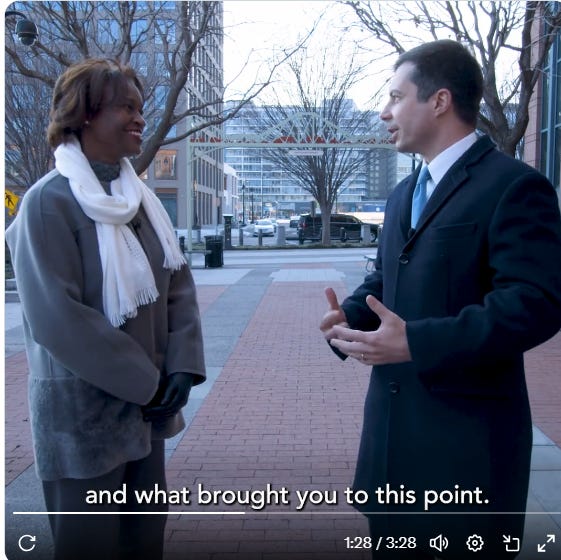
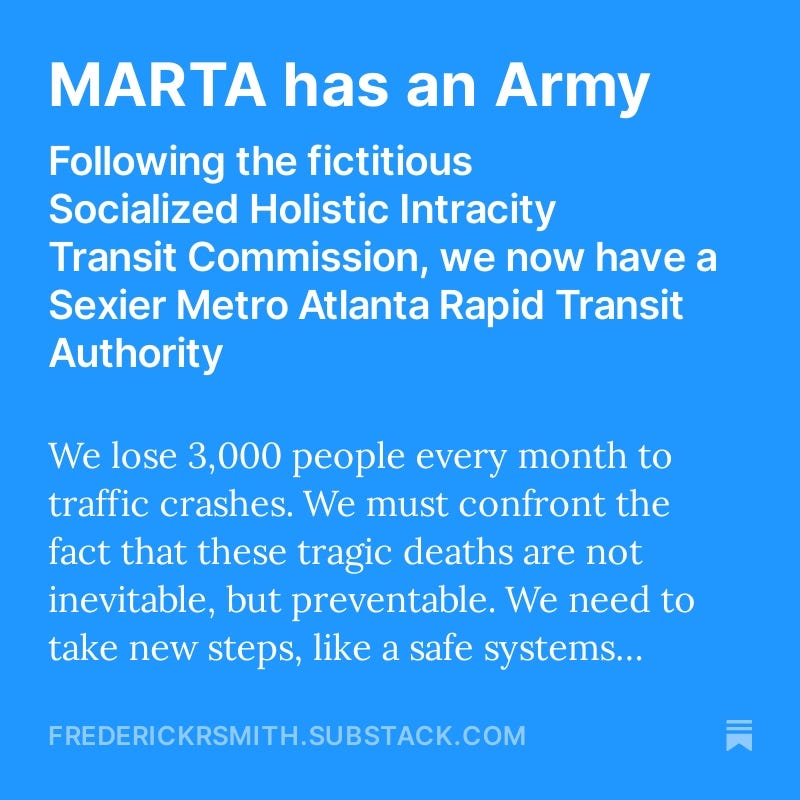
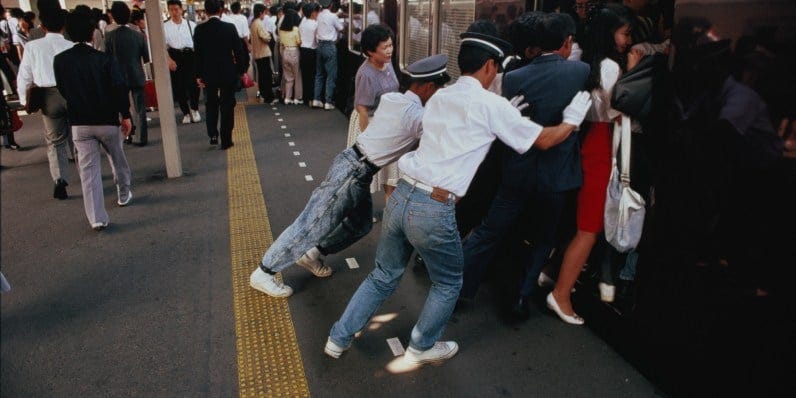







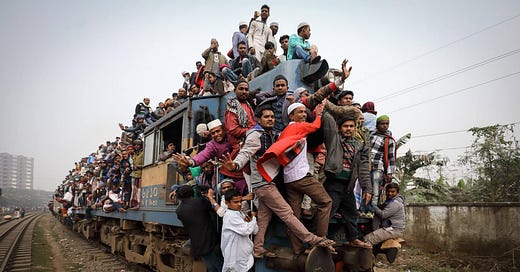

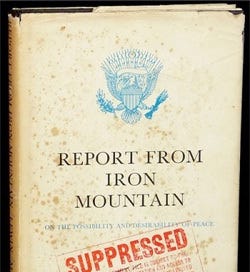

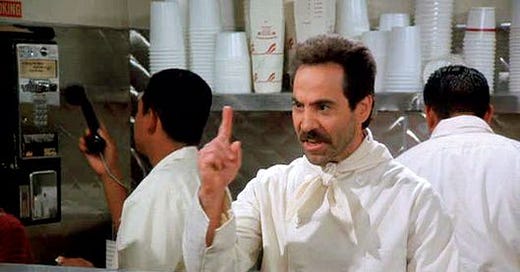

As long as The Big Guy gets 10%, it's all good.
Excellent. And a Terrorist target. What happens when the GRID Crashes? Are we also having more Big Rig crashes due to newer drivers? There was a warning on my phone there was one on my route home, with traffic tied up. HWY 51-S in this area is a Straight shot. Lots of side roads T into it.